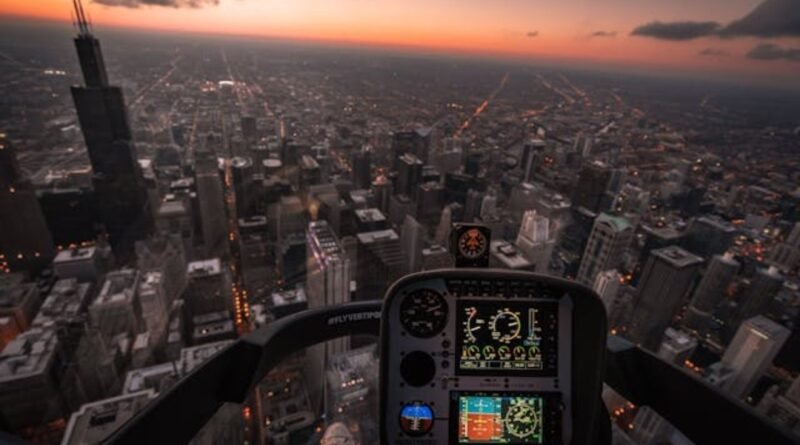Marvel of Modern Aviation: A Look at Cutting-Edge Technologies
Photo from Pexels
Aviation has undergone remarkable advancements, transforming the way we travel and explore the skies. From cutting-edge materials to revolutionary propulsion systems, modern aircraft technologies are pushing the boundaries of innovation. These innovations not only improve the efficiency and safety of air travel but also pave the way for new opportunities in global connectivity and sustainable aviation. This exploration will embark on a journey through cutting-edge technologies propelling modern aviation into uncharted territories, where innovation meets practical application to shape a future that once seemed beyond reach.
Advanced Materials and Lightweight Structures
Aircraft manufacturers have been using cutting-edge materials like carbon fiber composites, titanium alloys, and ceramic composites in their search for increased fuel economy and performance. These materials have exceptionally high strength-to-weight ratios, allowing for lighter and stronger aircraft structures. For example, carbon fiber composites have excellent corrosion resistance and durability yet are much lighter than conventional metals like aluminum. This weight reduction leads to lower fuel consumption and a lower environmental impact.
Additionally, these materials contribute to improved aerodynamic efficiency, which allows aircraft to operate at higher speeds and for longer periods while consuming less fuel. Aerospace-grade materials from reputable companies like Pilot John ensure that aircraft manufacturers have access to high-quality components for building next-generation aircraft.
Fly-by-Wire Technology: Precision and Control
Fly-by-wire (FBW) systems, which substitute electronic interfaces for conventional mechanical connections, mark a significant advancement in aviation control technology. FBW systems provide accurate handling characteristics and improved maneuverability by using computers to understand pilot inputs and modify control surfaces appropriately. The removal of bulky mechanical parts allows FBW systems to reduce weight and improve operating effectiveness. Pilots benefit from enhanced stability augmentation, automatic flight envelope protection, and adaptive control features that improve safety and responsiveness under changing flight conditions.
Next-Generation Engines: Efficiency and Power
The development of next-generation engines has transformed aircraft propulsion, with a focus on efficiency, lower emissions, and increased thrust. Commercial aircraft are mostly powered by high-bypass turbofan engines, which combine the efficiency of jet propulsion with the quieter operation and improved fuel economy of a large fan at the front. These engines significantly reduce fuel consumption and increase environmental performance, which helps the aviation industry meet its sustainability targets. Modern engines can achieve higher thrust-to-weight ratios due to advanced materials, improved aerodynamics, and innovative design features, resulting in faster climb rates, shorter takeoff distances, and larger payload capacities.
Extended maintenance intervals and lower operating expenses benefit pilots and operators, improving the overall efficiency and reliability of the fleet.
Integrated Cockpit Systems: Enhancing Situational Awareness
With the help of integrated cockpit systems, which seamlessly combine a variety of avionics and maritime technology, pilots can have complete situational awareness and operational control. These systems simplify flight operations and decision-making procedures by integrating digital displays, synthetic vision technologies, and improved flight management capabilities. Real-time weather data, topographical maps, and traffic warnings are all accessible to pilots, improving efficiency and safety throughout the flight. Integrated cockpit systems save pilot strain by centralizing vital data and automating repetitive activities. This enables more accurate navigation, fuel management, and operational planning.
Aerodynamic Innovations: Shaping the Future of Flight
Aerodynamic innovations continue to drive advances in aircraft performance and efficiency, with a focus on lowering drag, increasing lift-to-drag ratios, and improving overall aerodynamic stability. By lowering wingtip vortices, wingtip devices like winglets and raked wingtips reduce vortex drag and increase fuel economy. Blended wing body (BWB) designs combine the fuselage and wings into a single aerodynamic shape, resulting in significantly lower fuel consumption and noise emissions than traditional aircraft configurations. These developments allow airplanes to comply with strict environmental standards while reaching greater speeds, greater ranges, and enhanced passenger comfort.
Sustainable Aviation Initiatives: Greening the Skies
Sustainable aviation initiatives are driving the adoption of eco-friendly technologies and practices throughout the aviation industry. Renewable-source biofuels provide a competitive substitute for traditional jet fuels while lowering carbon emissions and their negative effects on the environment. With the promise of quieter operation and zero emissions while in flight, electric and hybrid-electric propulsion systems are being investigated for smaller aircraft and urban air transportation options.
Manufacturers and aircraft operators are devoting resources to research and development to optimize energy efficiency, reduce noise pollution, and minimize the environmental impact of aviation. These initiatives demonstrate the industry’s commitment to long-term growth and responsible stewardship of the skies for future generations.
Conclusion
The marvel of modern aviation is defined by its relentless pursuit of innovation and technological advancement. From advanced materials and fly-by-wire systems to next-generation engines and integrated cockpit technologies, each innovation has a significant impact on the future of aviation. As aviation evolves, these cutting-edge technologies will not only improve connectivity and sustainability but will also reimagine the possibilities of flight. From quieter and more fuel-efficient engines to advanced navigation systems that optimize flight paths, the future promises smarter, greener, and safer skies.

